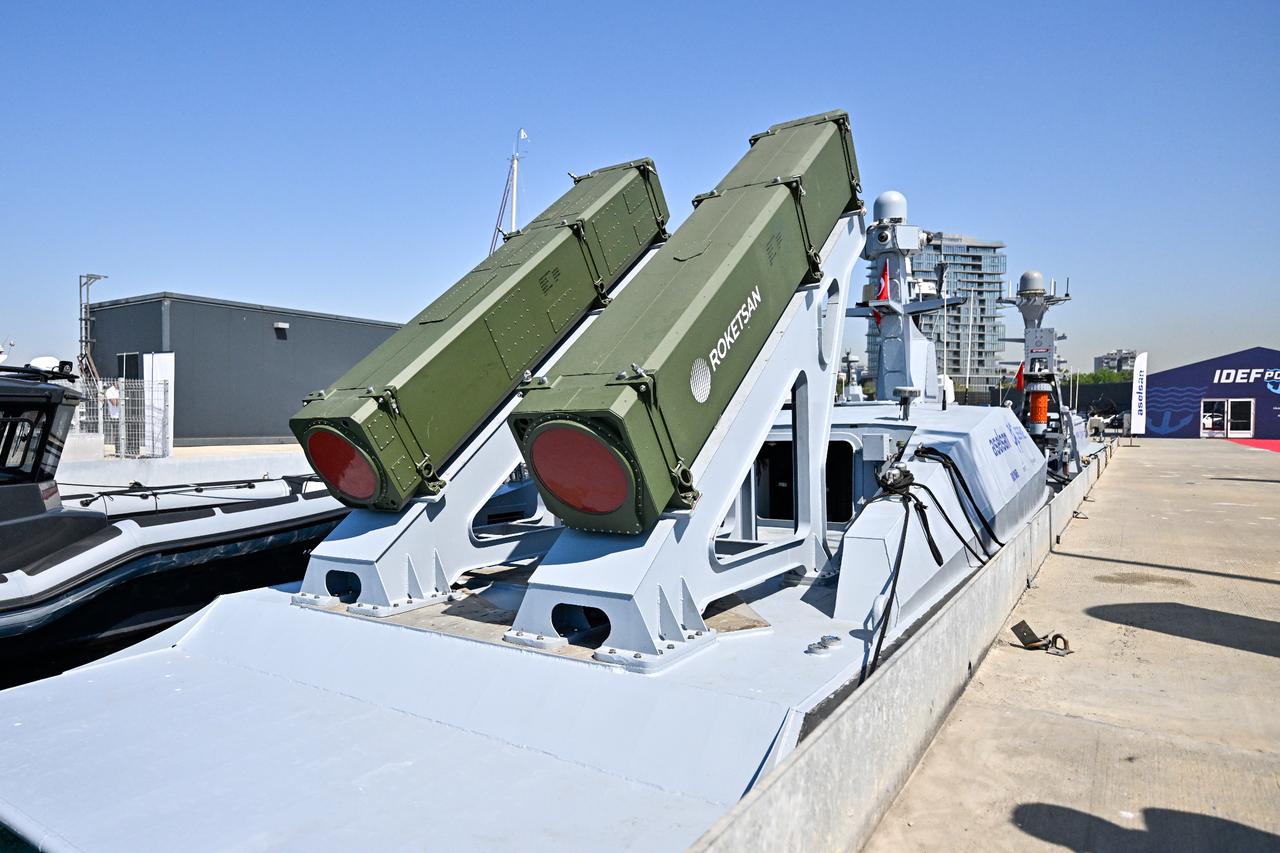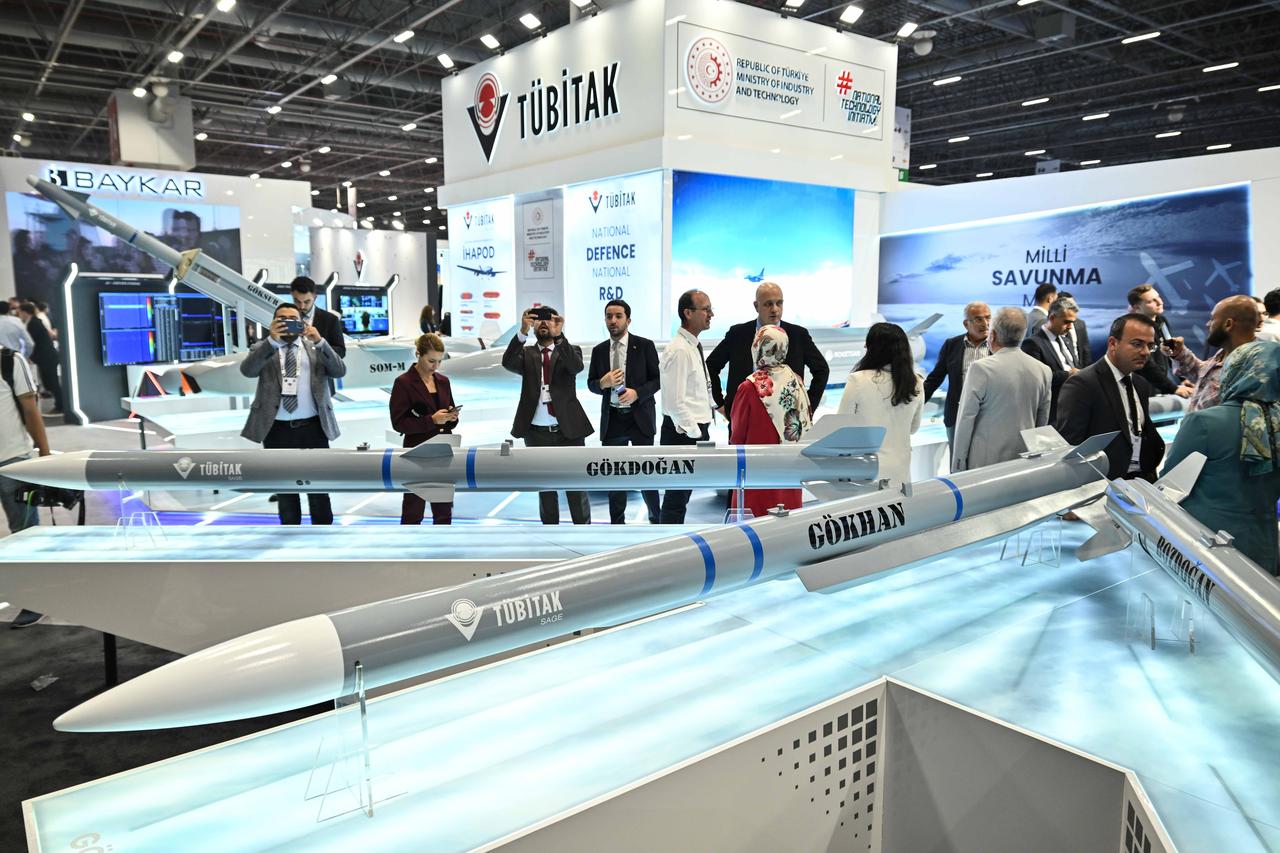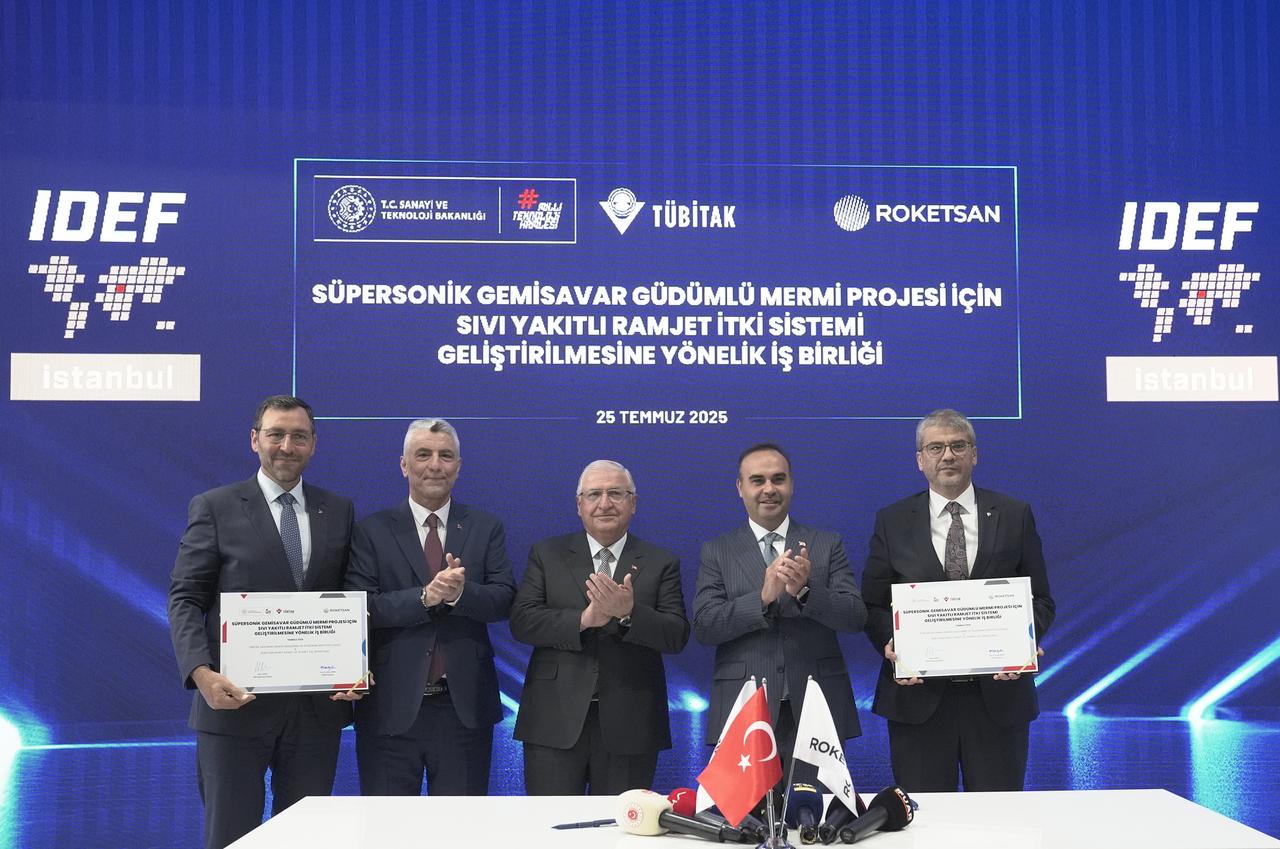
Roketsan and the Scientific and Technological Research Council of Türkiye (TUBITAK) have signed a deal to cooperate on the development of a ramjet engine for a supersonic anti-ship missile during the IDEF25 exhibition.
Three significant cooperation agreements were formalized during the event: an "R&D Cooperation Protocol" between TUBITAK and Aselsan, a "Cooperation for the Development of Liquid Fuel Ramjet Propulsion System for Supersonic Anti-Ship Guided Missile Project" between TUBITAK SAGE and Roketsan, and a "Cooperation Protocol for the Establishment of Chemical, Biological, Radiological, Nuclear (CBRN) Institute" between TUBITAK MAM and the Ministry of National Defense.

The cooperation covers the development of a liquid fuel ramjet engine, like the one used in the GOKHAN beyond-visual-range air-to-air missile (BVRAAM) of the Scientific and Technological Research Council of Türkiye Defense Industries Research and Development Institute (TUBITAK SAGE), for a supersonic anti-ship missile.
The missile will be the first supersonic anti-ship missile to be developed in Türkiye.
Current missiles with anti-ship capabilities include ATMACA, SOM-J, and CAKIR, which are all subsonic. There is no information regarding the launch platform, as it can be either an aircraft or a warship.
The signing ceremony was attended by Industry and Technology Minister Mehmet Fatih Kacir, National Defense Minister Yasar Guler, Trade Minister Omer Bolat, TUBITAK President Orhan Aydin, and Roketsan President Murat Ikinci.

The missile is predicted to be developed as something that comes in a moderate size to allow fitting on ships or aircraft. While countries like Russia and China have sizable platforms to accommodate anti-ship missiles weighing more than some short-range ballistic missiles, Turkish warships, being in line with the Western bloc design patterns, do not allow such sizes.
A similar case applies for aircraft, as Türkiye's launch platforms for cruise missiles are fighter jets and large UCAVs. Taiwan's Hsiung Feng III supersonic anti-ship missile offers a good example of what might emerge.
Taiwan, like Türkiye, operates fighter jets and small to medium-sized ships. The Hsiung Feng III was designed to fit even a corvette like the Tuo Chiang-class. Recently, the missile's air-launched variant was seen on an FC-K-1 fighter jet.
Supersonic anti-ship missiles, most of which are powered by ramjet engines that activate upon reaching supersonic speeds, can reach speeds above Mach 3 thanks to the ramjet engines. Such high speeds allow the missiles to penetrate through the enemy ship's defenses, not only thanks to the high speed making interception harder but also thanks to the less time to take action.
Additionally, the high speed gives these missiles far better structural breach capabilities per the kinetic energy, which, if coupled with a delayed fuse, can cause more severe damage to ships.

However, these missiles' high speed also brings disadvantages alongside the advantages. Far higher speeds mean limitations on sea skimming and maneuvering, both in terms of time window and envelope. The intense heat resulting from supersonic speeds makes the missiles more susceptible to IR sensors, whereas subsonic missiles, especially the ones with low observability, are harder to pick up by optical means.
It can be said that it would be more sensible to take supersonic anti-ship missiles as complements for striking ships alongside the slower but sneakier subsonic anti-ship missiles. Their time to target is less than three times, a smaller window to take action, and the potential for damage makes them viable A2/AD weapons.
Technically speaking, hypersonic weapons have existed since the mid-20th century. A hypersonic weapon is merely something that travels at Mach-5 or faster, or at least five times the speed of sound.